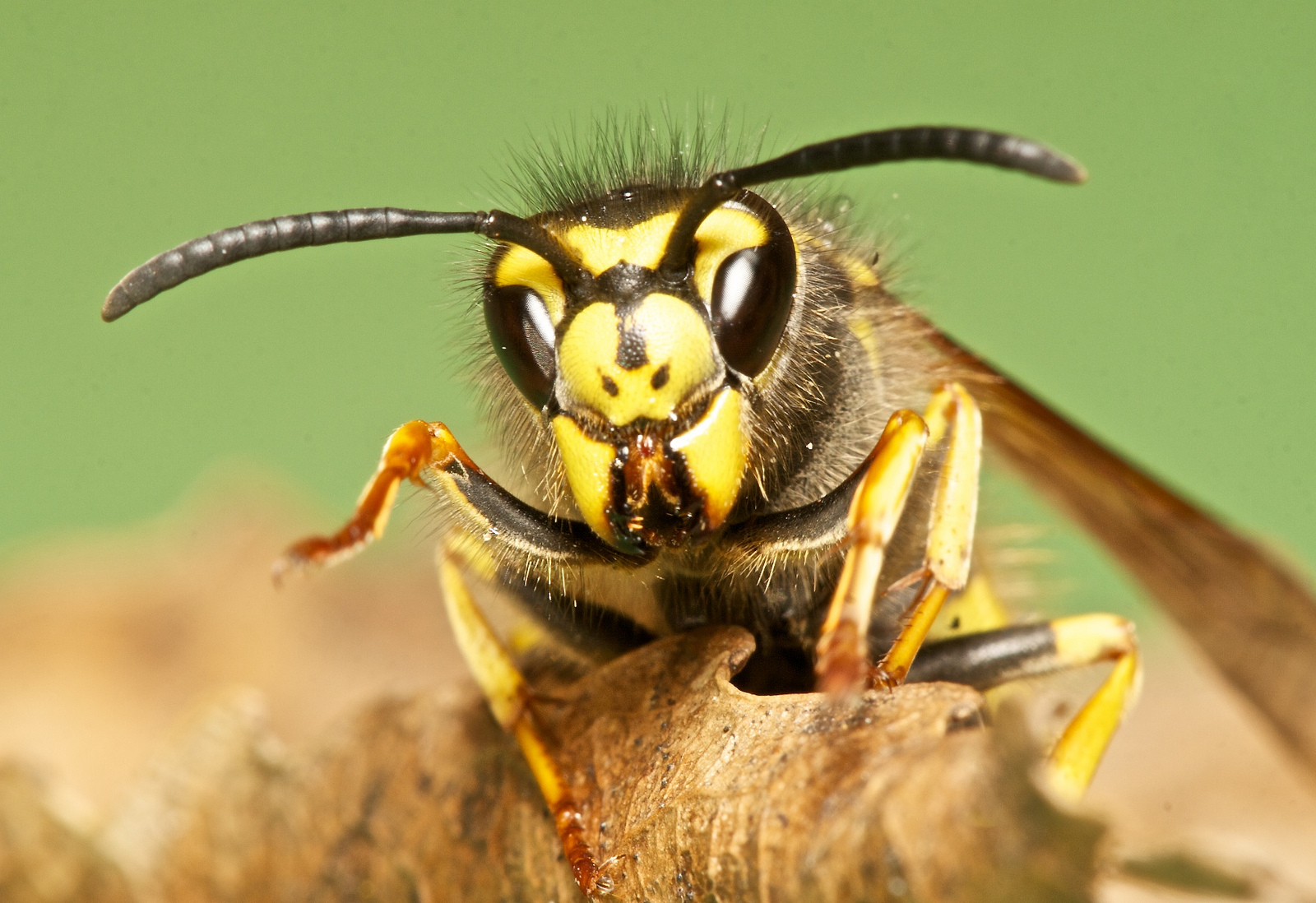Wasps
What they do: Around 30,000 identified species are classified as wasps. Wasps are divided into two primary subgroups: the majority are referred to as solitary and do not sting, the other subgroup is called social wasps, including yellow jackets and hornets, which make up only about 1000 species. Social wasps perform positive tasks for humans, such as controlling pest insect populations.
Unlike the honeybee, wasps don’t lose their stingers after they sting a victim, so they’re able to sting their target multiple times. The venom in a stinger can cause pain and may contain toxic proteins, which can cause allergic reactions. About 1 percent to 3 percent of the population is highly allergic, which can result in anaphylaxis, a life-threatening reaction.
What to do: The best way to avoid wasps is to have a professional remove and destroy any nests in close proximity to your living space. In addition, stings can be prevented with protective clothing, insect repellent, and avoidance of infested areas. For an individual who is stung but isn’t allergic to the venom, first aid can be performed at home, including cleaning and applying antibiotic ointment. If someone is allergic, seek immediate medical attention and take an antihistamine like Benadryl.





